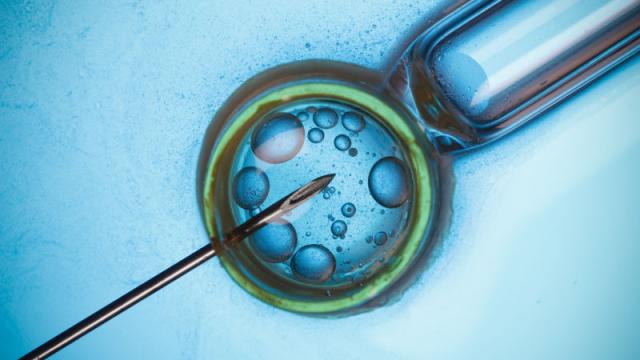A fertility clinic in Newcastle was just granted permission to start performing what’s known as the “three-parent baby” technique, a controversial in vitro fertilisation procedure that prevents genetic diseases from being passed on to children by giving them three genetic “parents”.
Image: Shutterstock
The technique relies on DNA from a mother, father and a female donor in order to keep a mum from passing on mitochondrial diseases. Mitochondrial DNA is made up of just 37 genes and can only be passed on to a child by its mother. So by replacing that tiny bit of genetic code via in vitro fertilisation, it’s possible to save a child from a deadly disorder they would otherwise definitely inherit.
In December, the UK’s Human Fertilisation and Embryology Authority approved the technique as safe for clinical use. On Thursday, it issued the first licence for the procedure to the Newcastle Fertility Centre. The clinic’s first three-parent babies could be born early next year.
In the US, lawmakers have blocked the technology. But it’s actually not a new approach to weeding out problematic genes from future children. In the 1990s, several babies were born with genetic material from three “parents” using a different technique. Some of them, though, developed unexpected genetic disorders, and the technology was never approved. Those children have caused critics to object to three parent babies for safety reasons, arguing that scientists should not be experimenting on what they view as a potential human life.
The technology has also led to fears that tinkering with the genetic makeup of embryos will, down the line, lead to designer babies.
When the UK gave the green light to the technique, the independent watchdog Human Genetics Alert claimed it was “the first step in a well mapped-out process leading to [genetically modified] babies, and a future of consumer eugenics”.
Last year, US scientists made headlines after a patient gave birth to a three-parent baby (in Mexico, of course). In that case, the boy’s mother carried the genes for a fatal nervous system disorder called Leigh syndrome. The technique works by swapping the nucleus of a fertilised mother’s egg, which contains the bulk of the baby’s genetic material, into a donor egg that contains mitochondria but has had its nucleus removed. In the ’90s, the technique involved simply injecting donor mitochondria into a mother’s egg instead, meaning fetuses could wind up with mitochondria from two sources.
In this more recent case, doctors are hopeful that the boy will not suffer from any genetic issues. The scientists who performed the procedure selected a male embryo on purpose, to ensure that if he does wind up with problematic mitochondrial mutations, he can’t pass them along to his offspring. Unknowns like this are why the National Institutes of Health has made it clear that it “will not fund any use of gene-editing technologies in human embryos”. Even in the UK, regulatory authorities have ensured that any gene editing in human embryos will take place under very strict oversight.
For now, though, these technologies are marching along. Time and more births are the only things that will really tell how safe the technique is.
